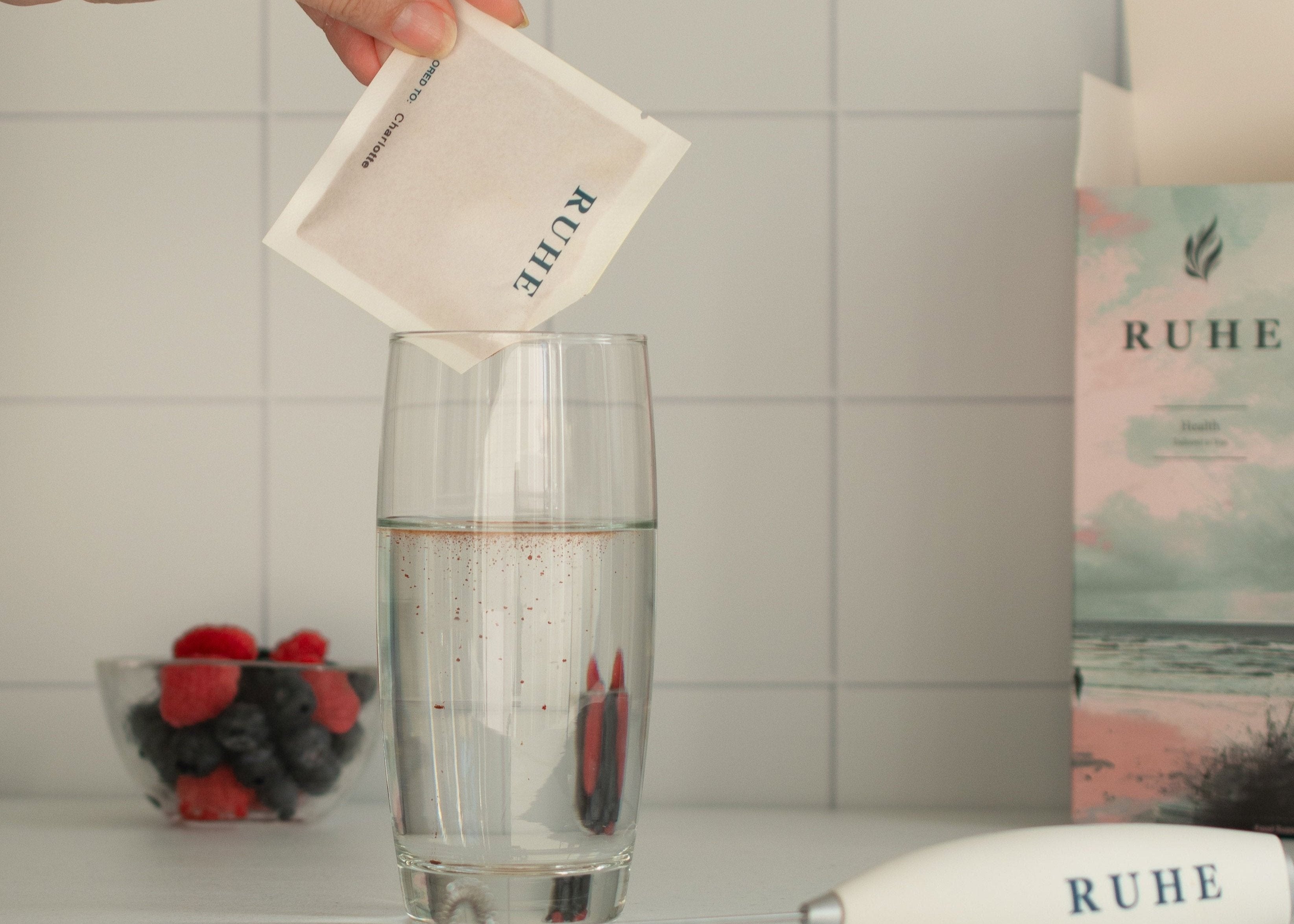Stop me if this sounds familiar: you’re sitting in a meeting, cooking dinner, or trying to drift off to sleep when suddenly you feel a surge of heat spreading through your body. Sweat beads on your forehead, your heart races, and you’re desperate for relief. Hot flashes don’t just disrupt your comfort, they can make you feel out of control and even embarrassed in social situations.
If this is you, know that you’re not alone. Hot flashes are a common symptom of menopause, and while they can feel overwhelming, there’s good news: you can reduce their intensity and frequency with a few practical changes.
In this guide, you’ll discover simple, actionable strategies to help you regain control of your comfort and ease those hot flashes. From lifestyle tweaks to stress-reducing techniques, and even supplements if you’re interested, we’ll cover it all. By the end, you’ll feel reassured, supported, and ready to take charge of your health.
Ready to dive in? Let’s start by understanding why hot flashes happen in the first place.
Understanding Hot Flashes

Hot flashes are one of the most well-known symptoms of menopause, but what exactly causes them? They occur because your body is adjusting to fluctuating hormone levels, particularly oestrogen. These shifts can confuse your internal thermostat, the hypothalamus, making it think you’re overheating, even when you’re not.
When this happens, your body triggers a series of cooling mechanisms: blood vessels dilate, sweat glands activate, and your heart rate speeds up. The result? That sudden wave of heat and flushing we call a hot flash.
While every woman’s experience is unique, there are some common triggers you can identify and manage:
- Spicy foods and caffeine: These can stimulate your nervous system and amplify the sensation of heat.
- Alcohol: Particularly red wine, which can dilate blood vessels and mimic the body’s heat response.
- Stress: Emotional stress increases cortisol levels, which can worsen hot flashes.
- Tight clothing: Restrictive outfits can trap heat and exacerbate discomfort.
The good news? By recognising these triggers, you’re already one step closer to reducing the frequency and intensity of your hot flashes.
Next, we’ll explore how small lifestyle adjustments can provide significant relief.
Lifestyle Adjustments for Hot Flash Relief
Managing hot flashes starts with making simple, everyday changes that prioritise your comfort and wellbeing. These tips are easy to incorporate into your routine and can make a noticeable difference over time.
1. Dress for Comfort
Layering is your best friend. Opt for lightweight, breathable fabrics like cotton, linen, or moisture-wicking materials. This allows you to remove layers when you feel a flash coming on. Avoid tight clothing that traps heat—looser fits promote better air circulation.
Quick Tip: Keep a small, portable fan or cooling scarf in your bag for those moments when you can’t control your surroundings.
2. Make Simple Dietary Shifts
Your diet plays a bigger role in managing hot flashes than you might think. Start with these easy adjustments:
- Stay Hydrated: Drinking plenty of water helps regulate your body temperature and prevent dehydration. Aim for 6-8 glasses a day.
- Add Cooling Foods: Incorporate more fruits, vegetables, and whole grains into your meals. Water-rich options like cucumber, watermelon, and leafy greens are especially helpful.
- Reduce Trigger Foods: Cut back on caffeine, alcohol, and spicy dishes to see if they influence your symptoms.
3. Try Gentle Exercise
Physical activity can stabilise your hormones and improve your overall mood and energy levels. Activities like walking, swimming, yoga, or tai chi are especially effective for relieving menopausal symptoms.
Bonus: Regular exercise supports weight management, which has been linked to reduced hot flash intensity.
4. Prioritise Sleep-Friendly Habits
Night sweats often disrupt sleep, leaving you exhausted the next day. Combat this by:
- Keeping your bedroom cool with a fan or open window.
- Using breathable bed linens, such as cotton or bamboo.
- Avoiding heavy meals, alcohol, or caffeine close to bedtime.
These simple lifestyle changes may not eliminate hot flashes overnight, but they’re an excellent foundation for long-term relief. In the next section, we’ll dive into mindfulness techniques that can help you manage hot flashes as they arise.
Mindfulness and Stress Reduction Techniques
Hot flashes can often feel worse when you’re stressed or anxious. Mindfulness and relaxation techniques not only help you manage stress but can also reduce the severity of your symptoms. Here are a few simple practices to try:
1. Deep Breathing Exercises
Slow, controlled breathing can help calm your nervous system and reduce the intensity of a hot flash. Here’s how:
- Sit or lie down in a comfortable position.
- Inhale deeply through your nose for a count of four.
- Hold your breath for a count of four.
- Exhale slowly through your mouth for a count of six.
Repeat this cycle for a few minutes, focusing on the sensation of your breath.
Why it works: Deep breathing helps regulate your heart rate and signals your body to relax, which can help you feel cooler.
2. Meditation and Mindfulness
Taking a few minutes each day to meditate can help lower stress and make you feel more in control. You don’t need to sit in silence for hours—just 5-10 minutes of guided meditation can make a difference.
How to get started: Download an app like Calm or Headspace, or search for free guided meditations on YouTube. Focus on relaxing imagery, such as a cool breeze or a gentle stream, to mentally cool yourself down.
3. Progressive Muscle Relaxation (PMR)
This technique involves tensing and relaxing each muscle group in your body to release physical tension.
- Start with your feet, clenching your toes for a few seconds before releasing.
- Work your way up your body, focusing on one muscle group at a time.
- Finish with your face and jaw, where stress often lingers.
PMR can be particularly effective before bed, helping you unwind and fall asleep more easily.
4. Cooling Visualisation
When you feel a hot flash coming on, close your eyes and imagine yourself in a cool environment—like standing in a snowy field or swimming in a refreshing lake. Pair this with deep breathing to enhance the effect.
Mindfulness techniques may take a little practice, but they’re a powerful tool for managing hot flashes and staying calm in the moment. Next, let’s look at how small changes to your environment can also make a big difference.
Environmental Changes for Comfort
Your surroundings play a big role in how you experience and manage hot flashes. With a few adjustments, you can create an environment that helps you stay cool and comfortable throughout the day and night.
1. Optimise Your Living Space
Keeping your home cool is essential, especially during warmer months.
- Use a fan or invest in an air conditioning unit to maintain a comfortable temperature.
- Close curtains or blinds during the hottest parts of the day to block out sunlight.
- Incorporate light, breathable fabrics into your furniture and décor—think cotton throws or linen cushion covers.
2. Create a Hot Flash Toolkit
Have essential items on hand for when a hot flash strikes:
- A handheld fan or cooling mist spray.
- A damp washcloth or cooling gel packs you can keep in the fridge.
- A refillable water bottle to stay hydrated.
Pro Tip: Consider using cooling technology, such as gel-infused pillows or cooling mattress toppers, to improve nighttime comfort.
3. Prepare Your Bedroom for Better Sleep
Night sweats can wreak havoc on your rest, so set up your bedroom to work in your favour:
- Layer your bedding with breathable sheets and a light duvet that’s easy to remove.
- Position a fan by your bedside for instant relief.
- Keep a glass of water and a small towel nearby for quick cooling during the night.
4. Keep Your Workspace Cool
If you’re dealing with hot flashes at work, set yourself up for success:
- Position a fan near your desk.
- Wear layers so you can adjust as needed throughout the day.
- If possible, communicate with your employer about temperature preferences or take short breaks to cool down.
By tailoring your environment to suit your needs, you’ll have a stronger sense of control over your symptoms. In the next section, we’ll look at supplements that can support your overall health and complement these practical changes.
Supplements for Support
If you’re looking for additional support to manage hot flashes and improve skin hydration, certain supplements can make a difference. Below, we’ve summarised some effective options backed by research.
1. Black Cohosh
- What it does: A popular herbal remedy for menopause, black cohosh is known to reduce the intensity and frequency of hot flashes.
- What research says: Studies suggest it can mimic oestrogen-like effects in the body, helping to stabilise temperature regulation.
- How to use: Available in capsules or teas, with a standard dose of 20-40 mg daily.
- Considerations: Avoid if you have liver concerns or are taking hormone-sensitive medications.
2. Soy Isoflavones
- What it does: These plant-based compounds, found in soy products, act as natural phytoestrogens to balance hormones and reduce hot flashes.
- What research says: Evidence shows that soy isoflavones can significantly decrease hot flash frequency, especially in women with lower natural oestrogen levels.
- How to use: Found in supplements or soy-based foods like tofu and soy milk. Typical supplements contain 50-100 mg of isoflavones per dose.
- Considerations: Choose non-GMO soy products for the best results.
3. Red Clover
- What it does: Another source of phytoestrogens, red clover helps regulate hormonal changes and improve skin hydration.
- What research says: Clinical trials have shown that red clover can reduce hot flashes and support skin elasticity over time.
- How to use: Available as capsules, teas, or tinctures, with a standard dose of 40-80 mg daily.
- Considerations: Avoid if you’re on blood-thinning medication or have a history of breast cancer.
4. Vitamin E
- What it does: Known for its antioxidant properties, vitamin E helps alleviate hot flashes and improve skin health.
- What research says: Studies indicate that 400 IU of vitamin E daily can reduce the intensity of hot flashes while promoting better skin hydration.
- How to use: Available in capsule form or as a topical cream.
- Considerations: Avoid high doses if you take blood-thinning medications.
A Simple Blend for Holistic Support

If you’re exploring ways to simplify your menopause journey, RUHE offers a thoughtfully crafted solution. RUHE is a science-backed supplement designed exclusively for women experiencing menopausal symptoms. It combines multiple benefits into one daily sachet, tailored specifically to your unique needs, symptoms, and body.
The blend prioritises quality, using only vegan, gluten-free, and non-GMO ingredients without added sugars or artificial flavours. Each ingredient in RUHE is carefully selected and backed by clinical research, ensuring it delivers optimal benefits. From easing hot flashes to supporting skin hydration, RUHE helps you feel like yourself again.
What makes RUHE stand out is its personalised approach:
- Tailored for You: Ingredients are selected to align with your symptoms and adjusted over time based on cutting-edge science.
- Clinically Effective Doses: Every sachet contains the right amount of each nutrient, based on what’s proven to work.
- High Quality and Purity: Ingredients are tested rigorously to exceed safety and absorption standards.
Best of all, RUHE streamlines your routine by replacing the need for multiple supplements, saving you both time and money, up to 70% compared to purchasing individual ingredients separately.
While RUHE is a wonderful option for holistic support, remember that natural relief is entirely possible through lifestyle changes alone. Whether you choose to incorporate RUHE into your routine or stick with the tips outlined earlier, the key is finding what works for you. Relief, comfort, and confidence are well within reach.

